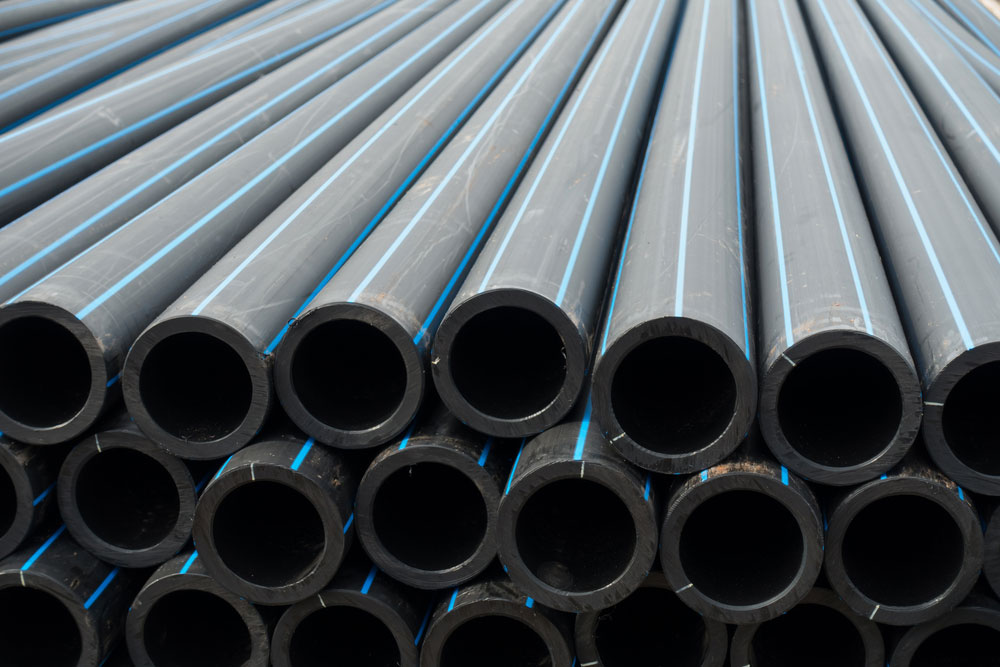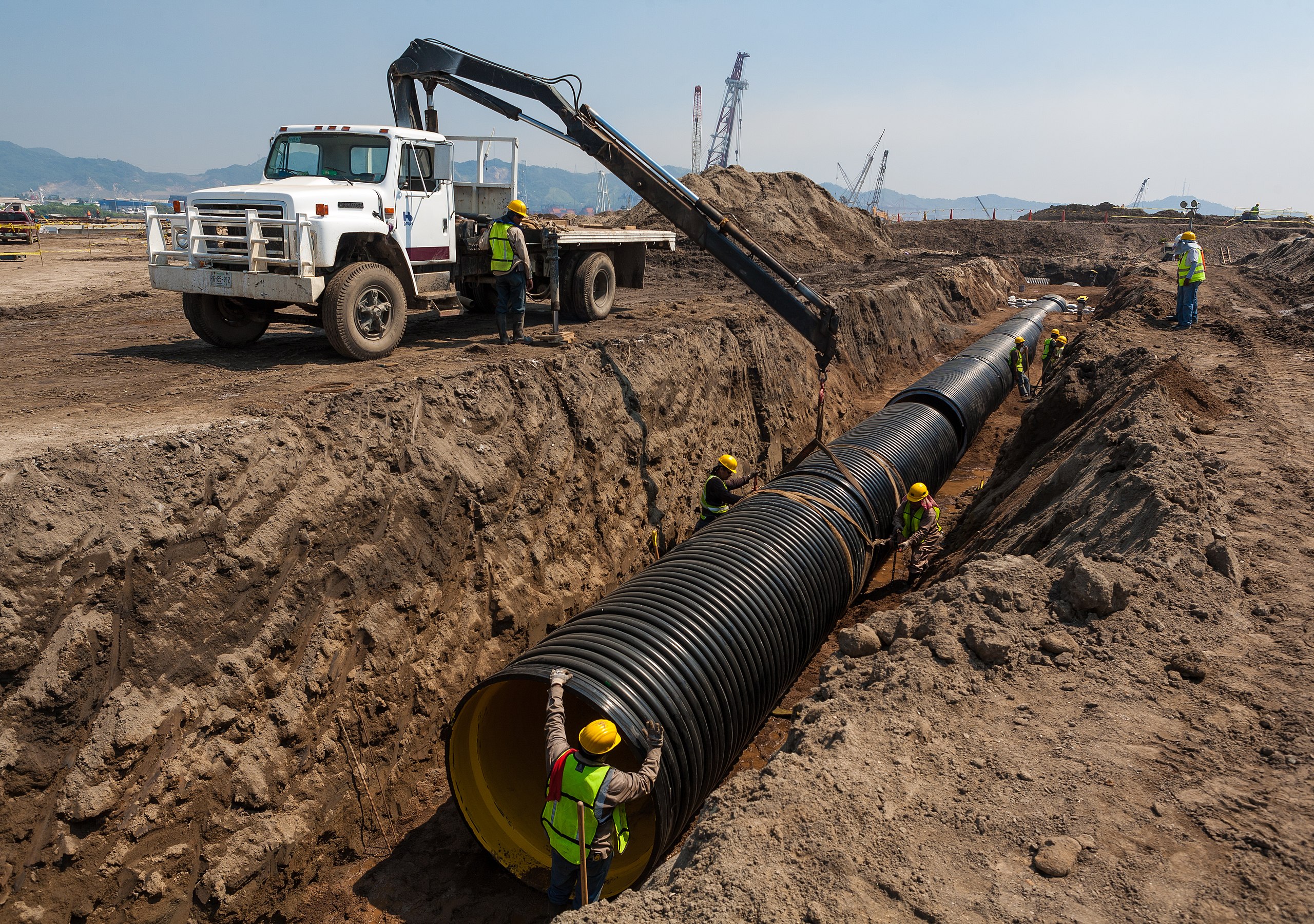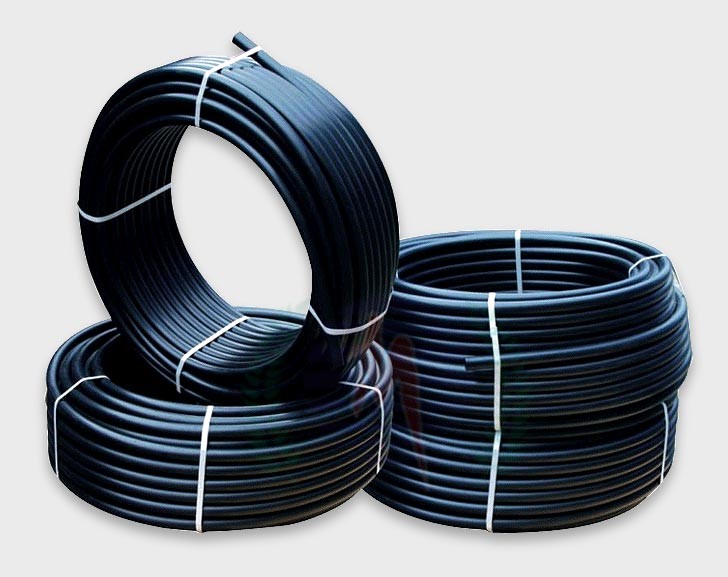Discover the Production Process Behind High-Quality HDPE Pipe and Its Applications
The manufacturing procedure of high-grade HDPE pipes is detailed and systematic. It begins with the choice of raw products that improve performance. Following this, ethylene undertakes polymerization to create material, which is then shaped with extrusion. Quality control is vital, making sure that the final product fulfills rigorous requirements. However, the journey of HDPE pipelines doesn't finish with manufacturing. Their applications across numerous sectors expose a more comprehensive value worth analyzing.
Understanding HDPE: Qualities and Advantages

High-density polyethylene (HDPE) is a flexible thermoplastic recognized for its longevity and resistance to various environmental elements. This material exhibits exceptional tensile toughness, making it suitable for demanding applications. Its low-density structure adds to a light-weight item, promoting ease of dealing with and setup. HDPE likewise showcases exceptional resistance to chemicals, which lessens deterioration when subjected to rough substances.
The product's low moisture absorption additionally enhances its durability, making it ideal for use in pipelines and storage containers. In addition, HDPE is immune to ultraviolet (UV) radiation, ensuring that items keep their integrity even when revealed to sunlight. Furthermore, its flexibility enables the creation of detailed forms without jeopardizing strength. The eco-friendly nature of HDPE, typically obtained from recycled materials, adds to its appeal, advertising lasting techniques in manufacturing. Generally, these residential properties and benefits make HDPE a recommended option for different commercial and consumer applications.
Raw Product Selection for HDPE Manufacturing
The option of raw materials for HDPE manufacturing is vital to verify the last product fulfills the preferred specifications and quality standards. High-density polyethylene (HDPE) is primarily created from polymerized ethylene, derived from nonrenewable fuel sources such as gas or unrefined oil. The high quality of these feedstocks substantially affects the mechanical and thermal homes of the final HDPE.
Additives likewise play a considerable function in improving HDPE's performance, consisting of anti-oxidants, UV stabilizers, and colorants, which boost resilience and resistance to environmental elements. The selection procedure have to take into consideration not just the chemical structure of the raw materials yet likewise their processing characteristics to guarantee efficient production.
The sourcing of raw materials ought to prioritize sustainability and compliance with ecological guidelines, as accountable practices are critical in today's market. Inevitably, mindful basic material choice lays the structure for generating top notch HDPE pipelines suitable for diverse applications.
The Extrusion Refine: Shaping HDPE Pipe
The extrusion process plays an important role in forming HDPE pipelines, starting with thorough product preparation strategies that assure excellent flow and consistency. Similarly crucial is the layout of the die, which straight influences the final measurements and surface area top quality of the pipe. With each other, these variables add substantially to the performance and quality of HDPE pipeline production.
Material Preparation Techniques
Reliable production of HDPE pipelines begins with precise material prep work methods, specifically the extrusion process. During this phase, high-density polyethylene resin is initial dried to eliminate wetness, ensuring optimal circulation characteristics. The resin is then fed right into the extruder, where it undergoes heating and melting, transforming into a viscous state. This home heating procedure is carefully regulated to preserve the product's integrity and efficiency. The liquified HDPE is compelled via a die, shaping it right into a continuous pipe type. Proper temperature management during extrusion is vital, as it straight influences the material's residential or commercial properties and the final product high quality. When formed, the HDPE pipeline is cooled down and cut to specified lengths, ready for subsequent handling and applications.
Die Style Importance
Precision in die layout plays an important duty in the extrusion process of HDPE pipelines. The die functions as the final shaping device, straight affecting the pipe's dimensions, wall thickness, and surface area finish. A properly designed die assurances uniform material flow, reducing defects such as abnormalities and weak points. The geometry of the die need to be optimized to accommodate the particular residential or commercial properties of HDPE, including its thickness and thermal actions throughout extrusion. Additionally, the cooling rate of the material as it goes through the die can substantially impact the pipe's structural integrity. Spending in advanced die modern technology is important for manufacturers intending to generate top quality HDPE pipes that fulfill industry requirements and customer expectations.
Top Quality Control Steps in HDPE Production
Different variables influence the top quality of HDPE pipeline production, reliable high quality control measures are critical to guarantee consistency and reliability pop over to these guys in the last product (hdpe pipe in stock Midland TX). Key quality control techniques consist of rigorous product inspection, verifying that the raw polyethylene satisfies well established standards for purity and density. During the extrusion process, criteria such as temperature level, pressure, and cooling time are very closely kept an eye on to preserve dimensional precision and structural stability
Additionally, post-production testing is essential; manufacturers usually conduct hydrostatic tests to examine the pipeline's toughness and resistance to stress. Visual assessments for surface problems even more boost quality assurance. Accreditation from appropriate requirements companies, like ASTM or ISO, supplies an added layer of integrity. By executing these thorough quality assurance actions, producers can minimize defects, improve efficiency, and ensure that the HDPE pipelines meet the details demands of various applications, inevitably resulting in customer contentment and trust in the item.
Applications of HDPE Pipeline Across Industries
HDPE pipelines are made use of throughout numerous sectors because of their toughness and flexibility. In water distribution systems, they ensure reliable distribution, while in wastewater monitoring, they give reputable options for waste transport. Furthermore, farming irrigation networks take advantage of HDPE's resistance to rust and adaptability, making it an optimal choice for modern farming practices.

Water Circulation Solutions
A substantial variety of sectors rely upon high-density polyethylene (HDPE) pipes for efficient water circulation systems. Recognized for their resilience and resistance to rust, HDPE pipes are commonly used in local water networks, agricultural irrigation, and commercial applications. Their light-weight nature promotes very easy handling and setup, lowering labor costs and time. Additionally, HDPE pipes can accommodate different pressure degrees, making them appropriate for both low and high-pressure systems. Midland TX HDPE Pipe Fittings in Stock. The versatility of the material enables seamless assimilation into existing framework, decreasing the requirement for extensive excavation. HDPE's resistance to chemical leaching assurances that the water delivered stays safe and tidy, making it an ideal selection for keeping the top quality of safe and clean water across numerous sectors.
Wastewater Administration Solutions
Efficient water distribution systems also pave the method for ingenious wastewater management options, where high-density polyethylene (HDPE) pipelines play a significant function. Prominent for their durability and resistance to rust, HDPE pipes are suitable for moving wastewater in different setups. Their versatility permits for easy installation in complex environments, decreasing the need for considerable excavation. In addition, HDPE's smooth indoor surface area minimizes friction, improving flow rates and effectiveness. These pipes are additionally immune to chemical leaching, guaranteeing that pollutants do not compromise the surrounding environment. Industries, municipalities, and treatment facilities progressively count on HDPE pipelines for their dependability and longevity, making them a preferred selection for contemporary wastewater monitoring systems. This flexibility highlights the critical significance of HDPE pipes throughout various applications.
Agricultural Watering Networks
Agricultural watering networks profit considerably from making use of high-density polyethylene (HDPE) pipelines, which provide effective and reliable water delivery to crops. HDPE pipelines are lightweight, making them easy to transfer and set up, while their adaptability enables various setups in varied terrains. These pipelines show superb resistance to corrosion, chemicals, and UV radiation, ensuring sturdiness in extreme farming atmospheres. Furthermore, their smooth interior surface decreases friction loss, maximizing water circulation and decreasing energy costs associated with pumping. The durability of HDPE pipelines, frequently exceeding half a century, adds to reduce upkeep and substitute expenses. Farmers increasingly count on HDPE pipes to enhance watering efficiency and promote lasting agricultural practices, ultimately leading to enhanced plant yields and source preservation.

Future Patterns in HDPE Pipeline Technology
As the need for sustainable and effective framework expands, advancements in HDPE pipe modern technology are poised to transform different sectors. Emerging fads include the integration of wise innovations, such as sensors and IoT capacities, which promote real-time monitoring of pipe conditions, minimizing maintenance prices and preventing leakages. In addition, the growth of innovative production methods, such as 3D printing, is enabling the manufacturing of complex, personalized pipe layouts that provide to details task needs.
Additionally, the concentrate on recycling and circular economy methods is driving the advancement of HDPE pipelines made from recycled products, boosting sustainability. Enhanced jointing techniques, such as electro-fusion and mechanical installations, are likewise improving setup efficiency and integrity. The growing emphasis on ecological policies is pushing suppliers to take on greener production procedures, ensuring that HDPE pipes not just meet industry standards however additionally foster a more sustainable future for facilities advancement.
Often Asked Concerns
Exactly How Does HDPE Compare to Various Other Plastic Products?
HDPE outperforms many other plastic materials concerning toughness, chemical resistance, and flexibility. Its low density and high tensile strength make it excellent for various applications, typically surpassing alternatives in both performance and durability.
What Are the Environmental Impacts of HDPE Manufacturing?
The environmental effects of HDPE production consist of greenhouse gas discharges, energy intake, and prospective pollution from producing procedures. Additionally, inappropriate disposal can result in dirt and water contamination, raising concerns concerning long-term environmental results.
Can HDPE Piping Be Recycled?
Yes, HDPE pipelines can be recycled. Numerous facilities accept made use of HDPE for handling, transforming it right into new items. This reusing adds to sustainability efforts, reducing plastic waste this post while preserving resources and energy in click to read the production cycle.
What Is the Life Expectancy of HDPE Water Lines?

How Do Temperature Variants Affect HDPE Pipe Performance?
Temperature variants greatly affect HDPE pipe performance, affecting adaptability and toughness. High temperatures can cause softening, while low temperatures may create brittleness, inevitably affecting the pipe's resilience and viability for various applications in diverse environments.